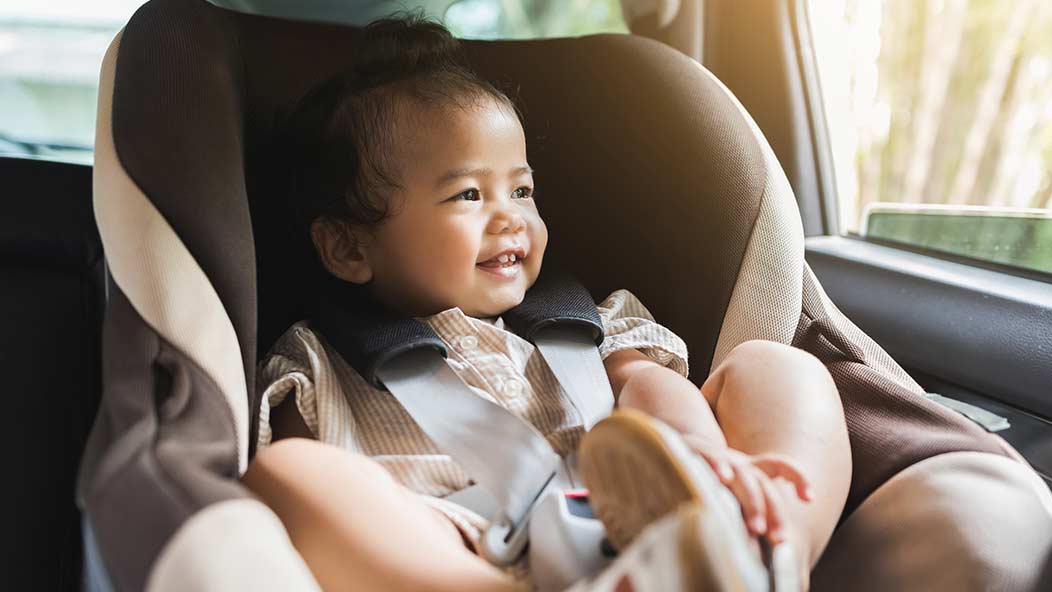Join Our eNewsletter!
Subscribe to our monthly newsletter to receive encouraging advice to help you lead a healthy lifestyle.

Kids and Hot Cars Don’t Mix
When the weather warms up, it’s incredibly important to stay vigilant and make sure you don’t leave children in the car – and not only during the summer months.
According to the U.S. Department of Transportation’s National Highway Traffic Safety Administration, in 2022 there were 30 hot car deaths of children in the United States. Some of those deaths occurred as early as May in southern climates.
Hot car deaths stem from a child suffering heatstroke. A car in Houston parked in an open parking lot on a 95-degree day can reach temperatures exceeding 140 degrees in less than an hour. Not only does the temperature inside the car climb exponentially in this first hour or so but also, in most cases, the child left in the car is restrained in a car seat, adding to the heat factor they’re experiencing. Heatstroke in a child can begin when their internal temperature reaches 103 degrees – an easy gap to bridge when the inside of a car can reach 147 degrees in as little as 45 minutes.
Yes, It Could Happen to You
There are three common situations that typically lead to hot car deaths of children:
- Parents or other caregivers unintentionally leave a child behind in the car (responsible for 53% of hot car deaths)
- Children gain access to a car on their own and become trapped (responsible for 26% of hot car deaths)
- Parents or caregivers intentionally leave a child locked inside while they go elsewhere (it’s illegal in Texas to knowingly leave a child in a vehicle for more than 5 minutes)
When a child is unwittingly left in a parent’s car, it’s most often because of a change in routine. For example, the parent who doesn’t normally drive the child to daycare is suddenly charged with doing so. In many instances, once the parent backs out of the driveway, they go into autopilot, thinking about the day ahead and completely forgetting there’s a sleeping child in the back seat. They go into work and sometimes don’t even realize what’s happened until the end of the day when they go back to their car.
The statistics over the past 25 years of hot car deaths are staggering:
- Almost half of the time when a child is forgotten in a hot car, the caregiver meant to drop the child off at daycare or preschool.
- The highest number of incidents occur on Thursdays and Fridays, when caregivers are more likely to be tired and absentminded after a work week.
- More than half of deaths are children under 2 years old.
Avoiding a Horrific Situation
It’s terrifying for caregivers to think they could ever leave a child alone in a hot car, but it can happen to anyone. However, there are steps you can take to avoid making a tragic mistake:
- Never leave a child unattended in a car, even if the windows are rolled down or the A/C is on.
- Get in the habit of always checking your car before you get out. Remember “Park, look, lock.” You can even tape a note on your vehicle’s dashboard as a constant reminder.

- Keep something next to your child’s car seat that you’ll be likely to notice is missing, such as your cell phone, purse, or left shoe.
- Keep a stuffed animal in the child's car seat or booster. When the child goes in, remove the stuffed animal and put it next to you on the front seat. When you take the child out, put the animal back in the car seat.

- Ask your childcare provider to notify you if your child hasn’t arrived at daycare or preschool as scheduled.
- Invest in a car seat sensor/alarm that reminds you when a child is in the vehicle.
- Never allow a child to play in an unattended vehicle, and always keep your vehicle locked when not in use.
- Keep your car keys and key fobs out of the reach of children.
See Something, Do Something
If you see a child alone in a vehicle, check to see if the child seems alert and responsive. If they are, attempt to locate the parents, but don’t take more than a couple of minutes to do so. If you can’t locate them, call 911. If the child isn’t responsive, get help immediately. Flag down someone who can possibly break a window or unlock a door, or call 911.








